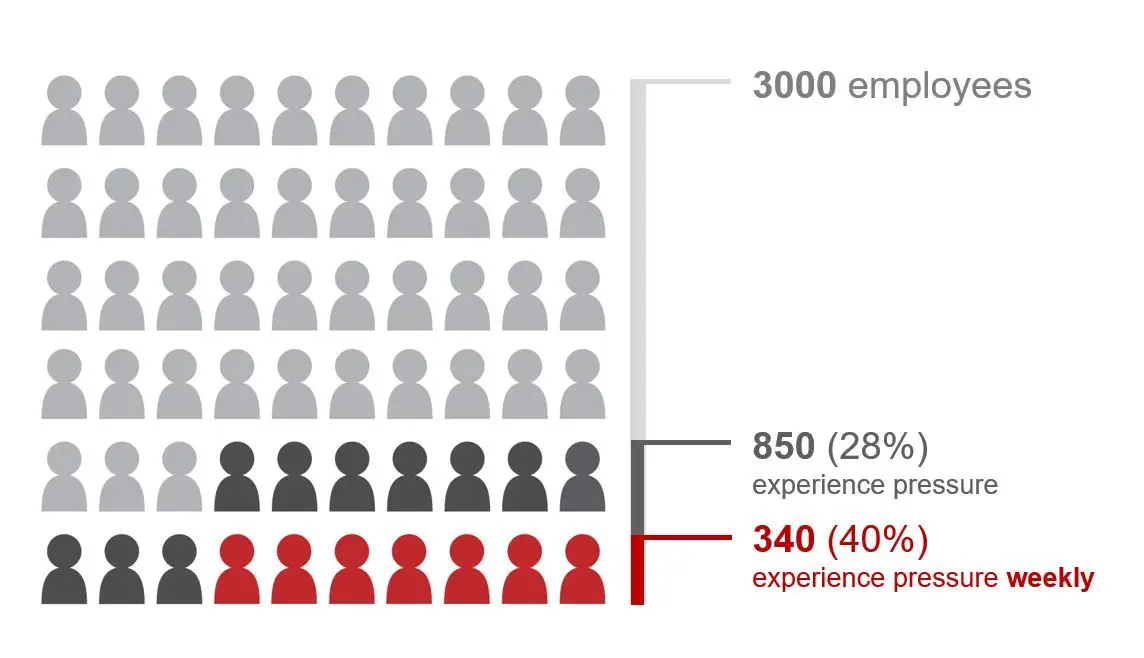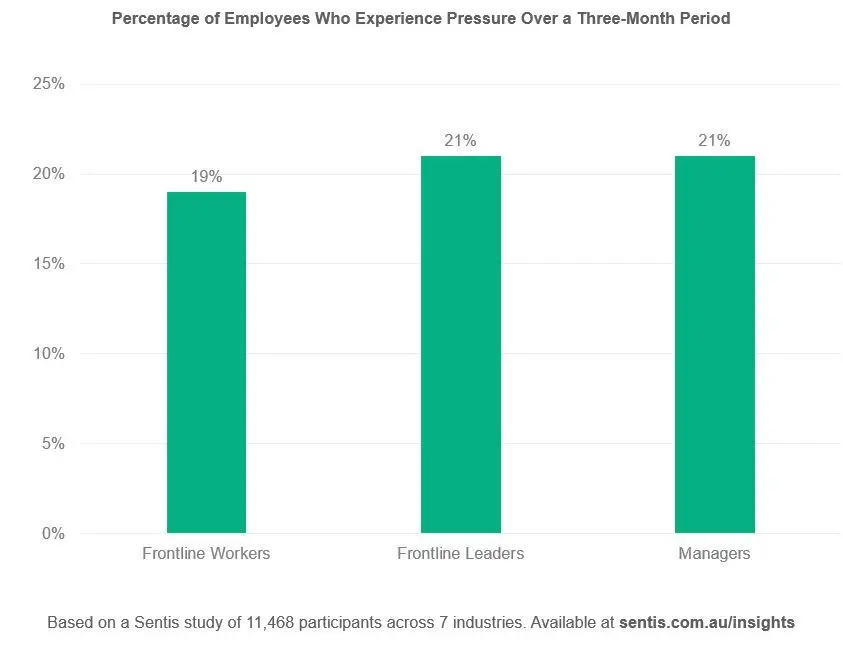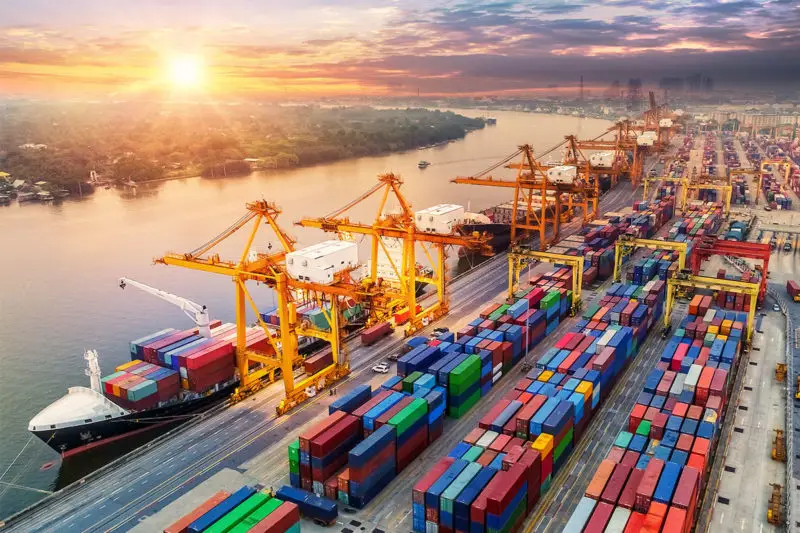A healthy dose of performance pressure is crucial for maintaining optimal levels of production. It motivates teams meet their KPIs, deliver on production targets and stay on-task.
Problems arise when levels of production pressure increase to the point that the focus on production starts to overshadow the importance of safe behaviours.
Especially if your leaders aren’t aware of the negative impact that too much pressure can have on safety performance, it’s easy to fall into the trap of accidentally motivating a worker to prioritise production over safety.
This is only amplified by the fact that production pressure can come from a multitude of sources and driven by both internal and external factors.
Externally, production pressure can be influenced by a wide range of factors including other leaders, production and KPI requirements, production incentives, customers or unexpected maintenance issues.
There are also internal factors that can influence production pressure.
When workers want to prove that they’re capable of completing a task efficiently, even though they don’t have the right resources, time or support for it, they can feel a sense of implicit pressure to prioritise production over safety.
If things don’t go to plan or they start to fall behind, this pressure can intensify—even though it wasn’t explicitly being forced upon them.
While on the surface, it might not seem like a major issue, looking deeper into the impact of a culture that prioritises production over safety paints a much more dire picture.
What happens in a culture that pits safety against production?
While a little bit of pressure is healthy, left unchecked, too much pressure can lead to your workplace being akin to a time-bomb, just waiting for a major safety incident to happen.
That’s because when workers are put under pressure to prioritise production over safety, they’re more likely to:
- Cut corners and take unnecessary risks to get the job done quickly
- Hide incidents or errors that occur, especially if they’re a direct result of cutting corners and not following safety procedures
- Not adhere to effective safety procedures as they view them as a hindrance to performance
That’s exactly what’s been happening in industries across the globe, including the mining industry in our own backyard, where the Queensland Government recently called for a safety reset due to the worst mining fatality rates in over 20 years.
The prioritisation of production over safety has been suggested as a key contributing factor.
That’s because while the demand for mined goods has heightened with increased global demand, the overall growth of the industry has been declining—leading to increased production levels but fewer employees to address them.
This increase in production pressure, coupled with a negative safety culture that prioritises production over safety, likely played a role in the mining crisis and serves as a strong reality check for what can happen when safety is pitted against production.
This negative impact is seen in industries all around the world, stressing the importance of moving away from a culture that prioritises production over safety and towards a culture that prioritises safe production instead.
But as an organisation trying to improve your safety culture, where do you even begin? Well, while it’s easy to look at the behaviours of your frontline workers for an answer to the problem, the reality is that production pressure exists at every level of your organisation.
The problem starts at the top
Our recent study into the links between safety leadership and safety climate, behaviour and performance (download a copy for yourself here) found that over 28% of all workers experienced pressure from their supervisors to prioritise production over safety, at least once in the last 3 months.
To make things worse, over 40% of these workers stated that they continued to experience this excessive pressure on a weekly basis.
To put that into perspective for you, if you had an organisation of 3000 employees, here’s how that would look:

Further, the data shows that 21% of frontline leaders and management feel increased rates of pressure with frontline workers not far behind at 19%.
These results also reinforce the fact that production pressure is felt across every level of an organisation, potentially indicating a flow-on effect from the very top of the chain.
Who experiences pressure?

With these statistics in mind, it’s clear that production pressure is not just a problem for frontline workers. To mitigate the negative impact of production pressure means you need to work your way down from the top by starting with your organisation’s leaders.
The impact of leadership on safe production
Most leaders are aware that safety is a priority. But even with the best of intentions, when production starts to falter, it’s all too common for leaders to focus too heavily on trying to increase performance without considering the negative impact that this added pressure could have on safety outcomes.
That’s exactly what our research indicates, with increased production pressure and a poor ability to balance safety against production closely linked to poor leadership ability.
On the other hand, leaders who demonstrate strong safety leadership skills were better able to manage the balance between production and safety by motivating their team to focus on a shared goal for safe production instead.
This is further reinforced by the fact that effective safety leadership has been shown to have a positive impact on overall team safety behaviours and performance.
While at first, that sounds like great news, the problem arises when you realise that only 24% of leaders actively demonstrate strong safety leadership behaviours.
For the remaining 76% of leaders, their poor safety leadership has a detrimental impact on workplace safety outcomes, which is only amplified during periods of high production when their team is increasingly motivated to prioritise production over safety.
In that kind of organisational culture, a major safety incident is no longer a matter of “what if it happens”, but a matter of “when will it happen”.
Your systems might be part of the problem
Beyond the impact of leadership, your organisation’s systems and internal processes might also be unwittingly promoting the prioritisation of production over safety.
That’s because a key component of organisational culture comes down to the processes, procedures and artefacts in place that guide your workers as to how they should behave.
Think of them as being signals that your workers use to understand what you value as an organisation. In light of this, if your systems only reward and emphasise the importance of effective production, then this emphasis will influence the behaviours of your workers as they start to develop the same shared perspectives about the importance of production over safety.
Some examples of these processes include:
- KPIs that are solely focused on production, output and lag safety data
- Reward and recognition programs that unwittingly promote sacrificing safety to reach KPIs
- Contract structures and contract selection processes that focus purely on the cheapest option, rather than the safest records
- Safety leadership capabilities and complacency towards adhering to effective safety procedures
But now that you know the impact that pitting production against safety can have, where do you go from here? Well, you need to start by shifting your employees’ perspectives by showcasing that as an organisation, you value safe production.
Showcase that you value safe production
Think of your organisation’s culture and your employees’ behaviours as a reflection of the values that you showcase as an organisation. That’s because despite their best intentions, your workers can only act on the information that’s presented to them.
So, if they’re under the impression that you value production over safety because that’s what they’ve seen, then they’ll start to echo those same views too.
To swing the pendulum back in the other direction, you need to showcase to your workers that you truly value their safety by actively rewarding safe behaviours.
Here are a few simple strategies that you can get started with today:
1. Identify the organisational barriers holding you back from safe production
Start by first taking a critical look at your organisation’s systems, processes and procedures and ask yourself, “How well are we communicating that we value safety?” Review your safety vision and values to ensure that not only are they easily understood, but that they’re also easy to access and are deemed to be achievable by your entire team.
2. Arm your leaders with the tools they need to succeed
Ensure that all of your leaders are on the same page with a shared commitment towards developing a culture of safe production. With this shared goal in mind, equip your managers and frontline leaders with the tools they need to effectively communicate safety messages, especially during periods of high demand where the spotlight may be more heavily focused on production.
3. Review your KPIs and how you reward your team’s performance
While you’ve got effective KPIs in place for production outcomes, have you got similar KPIs for rewarding and praising effective safety behaviour such as incident reporting or safety improvement suggestions?
Actively rewarding safe behaviours communicates to your team that you don’t just value efficient production, but that you value safe behaviours too. This also includes basing your reward and recognition strategies on lead indicators for safety.
Production doesn’t have to compete with safety
While the pressure of hitting production targets can sometimes make safety procedures feel like a hindrance, the reality is that without a positive safety culture, your workers will likely put themselves in harm’s way, every single day, just to meet their KPIs.
And when the inevitable happens and someone is injured or property is damaged, this can have a much greater impact on production as work is shut down and everyone involved loses hours to incident investigation processes.
Instead, shift your focus towards developing a culture of safe production where performance and safety can go hand-in-hand by signalling to your workers that you value their safety as an organisation.
By also shifting your focus towards developing your leader’s safety leadership capabilities, you can take some of the pressure off your frontline workers—allowing them to take the time they need to complete their jobs safely and effectively.
In doing so, you can nurture a workplace that motivates your team to perform at a high level, while doing so in a manner that allows them to still get home safely at the end of the day.



